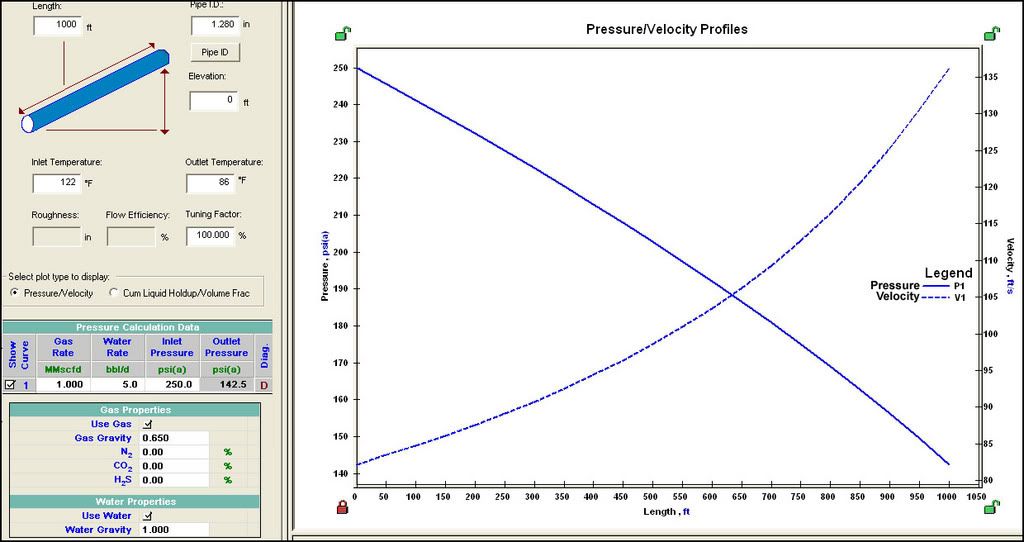 Physics Question - Water fallout from flowing gas?
Physics Question - Water fallout from flowing gas?
I'm considering working on a project here.
The Scenario:
- a piece of horizontal pipe is flowing gas and water through with a known inlet and outlet pressure. Pipe rougness is known.
- the gas(CH4) and water rates are know as well as their density
- at the beginning of the pipe, all the water is suspended in the gas due to the velocity, pressure, temp, etc of the conditions that the gas is flowing at
- as the gas and liquid flow along the lenght of pipe, a pressure drop is experienced from frictional effects of the pipe wall.
- as pressure drops along the length of pipe, the gas velocity increases due the it being less dense.
- the temperature also drops as the pressure drops down the length of pipe
- as the conditions along the length of pipe change, the ability for the gas to suspend and carry the water changes. Water may begin to drop out of the gas and collect on the floor of the pipe
I'm able to predict the pressure and velocity along the length of pipe, as well as a rough temp. This model assumes all gas + liquid that enters also exits.

» Click image for larger version
Objective:
- predict liquid fallout along the length of the pipe
Other Notes:
- I think a phase diagram, or some other info describing the potential for the gas to absorb water at different conditions is required.
- This is the minimum velocity required to suspend water in a vertical pipe:

A = cross-sectional area of flow (ft2)
G = gas gravity
k = calculation variable
P = pressure (psia)
qg = gas flow rate (MMscfd)
T = temperature (R)
vg = minimum gas velocity required to lift liquids (ft/s)
Z = compressibility factor (supercompressibility)
Any ideas? 
Current Cars:
2019 BMW X3 M40i Stage 2, 12.44 at 110mph
1972 Chevy Super Cheyenne C10 Pickup 402 big block, 700R4
2004 GMC 2500HD 8.1L
Past Cars:
1970 Chevy Blazer, 2wd
2003 BMW X5 4.6IS Doushmobile, moneypit
2015 Ford Fiesta ST | Cobb Stage 1, catless downpipe
2008 Corvette Z06 - 11.39 at 123.8mph
2002 Corvette Z06 - 12.10 at 116.5mph
2005 Jeep Wrangler LJ
1993 5L Mustang - 12.59 at 108mph
1989 5L Mustang
1990 Jeep Cherokee
1991 Acura Integra RS 403Honda








 Quote
Quote


